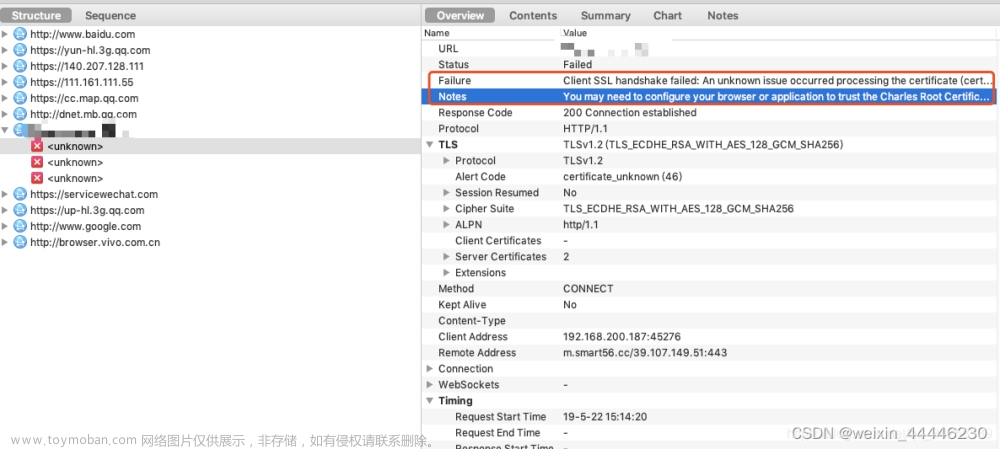思考
在解析请求之前我们要思考一个问题,我们解析的是其中的哪些内容?
对于最基本的实现,当然是请求类型,请求的url以及请求参数,我们可以根据请求的类型作出对应的处理,通过url在我们的mapstore中找到servlet,那么请求的参数我们是不是还没有储存的地方呢?
所以我们要先定义一个类来存储参数
HttpServletRequest
当然你也可以通过接口的形式来规范方法,我在这里进行的是最基本的仿写,就不做复杂的设计了,下面这个类是存储请求信息的类,我们在后续还会进行扩展,因我们还要实现cookie、session等功能
package com.tomcatServer.domain;
import java.util.HashMap;
import java.util.Map;
/**
* http servlet请求
*
* @author ez4sterben
* @date 2023/08/15
*/
public class HttpServletRequest {
private final Map<String,String> params = new HashMap<>();
private String requestBody;
public String getRequestBody() {
return requestBody;
}
public void setRequestBody(String requestBody) {
this.requestBody = requestBody;
}
public Map<String, String> getParams() {
return params;
}
public String getParam(String paramName){
return params.get(paramName);
}
}
http请求解析,HttpServletRequest
我们再给服务器发一个带参数的请求看看http信息是什么样子的
http://localhost:8080/test?aaa=aaa
这个信息的第一行就是请求的类型、url和参数,那么我们直接对这里进行解析就行了
// 解析request param
String url = requestData.split(" ")[1];
String[] urlContent = url.split("\\?");
// ?前的是请求地址
String requestPath = urlContent[0];
// 问号后的是参数
String params = urlContent[1];
// 参数按照=分割
String[] paramsKeyValue = params.split("=");
存入map
// 设置请求参数
HttpServletRequest request = new HttpServletRequest();
Map<String, String> paramsMap = request.getParams();
for (int i = 0; i < paramsKeyValue.length; i += 2) {
paramsMap.put(paramsKeyValue[i],paramsKeyValue[i+1]);
}
响应类HttpServletResponse
这个类中要注意的是我们要给返回的信息拼上一个头部信息代表着成功编号和信息类型
package com.tomcatServer.domain;
import java.io.PrintWriter;
/**
* http servlet响应
*
* @author ez4sterben
* @date 2023/08/15
*/
public class HttpServletResponse {
private final PrintWriter out;
private static final String response;
public HttpServletResponse(PrintWriter out) {
this.out = out;
}
static {
response = "HTTP/1.1 200 OK\r\n" +
"Content-Type: text/plain\r\n" +
"\r\n";
}
/**
* 写
*
* @param content 内容
*/
public void write(String content) {
out.println(response + content);
}
}
代理
既然实现到这里了,自然会想到,执行谁的响应呢?
没错,当然是servlet中的,那就需要我们使用代理来调用其中的方法了
package com.tomcatServer.utils;
import com.tomcatServer.annotation.WebServlet;
import com.tomcatServer.domain.HttpServletRequest;
import com.tomcatServer.domain.HttpServletResponse;
import com.tomcatServer.servlet.MapStore;
import java.lang.reflect.InvocationTargetException;
import java.lang.reflect.Method;
/**
* servlet工具类
*
* @author tomcatProject.ez4sterben
* @date 2023/08/15
*/
public class ServletUtil {
/**
* 是web servlet
*
* @param className 类名
* @return {@link Boolean}
*/
public static Boolean isWebServlet(String className){
try {
Class<?> aClass = Class.forName(className);
WebServlet annotation = aClass.getAnnotation(WebServlet.class);
if (annotation == null){
return Boolean.FALSE;
}
} catch (ClassNotFoundException e) {
throw new RuntimeException(e);
}
return Boolean.TRUE;
}
/**
* 初始化servlet
*
* @param className 类名
*/
public static void initServlet(String className){
try {
Class<?> aClass = Class.forName(className);
String url = aClass.getAnnotation(WebServlet.class).value();
if (url.startsWith("/")) {
MapStore.servletMap.put(url,aClass);
}else {
MapStore.servletMap.put("/" + url,aClass);
}
} catch (ClassNotFoundException e) {
throw new RuntimeException(e);
}
}
/**
* 调用get方法
*
* @param url url
* @param request
*/
public static void invokeGet(String url, HttpServletRequest request, HttpServletResponse response){
Class<?> aClass = MapStore.servletMap.get(url);
try {
Method doGet = aClass.getDeclaredMethod("doGet", HttpServletRequest.class, HttpServletResponse.class);
Object instance = aClass.newInstance();
doGet.invoke(instance, request, response);
} catch (NoSuchMethodException | InstantiationException | IllegalAccessException | InvocationTargetException e) {
throw new RuntimeException(e);
}
}
/**
* 调用后
*
* @param url url
* @param request 请求
* @param response 响应
*/
public static void invokePost(String url, HttpServletRequest request, HttpServletResponse response){
Class<?> aClass = MapStore.servletMap.get(url);
try {
Method doPost = aClass.getDeclaredMethod("doPost", HttpServletRequest.class, HttpServletResponse.class);
Object instance = aClass.newInstance();
doPost.invoke(instance, request, response);
} catch (NoSuchMethodException | InstantiationException | IllegalAccessException | InvocationTargetException e) {
throw new RuntimeException(e);
}
}
}
HttpServlet规范
接下来定义一个抽象类来规范servlet类
package com.tomcatServer.domain;
import java.io.IOException;
/**
* http servlet
*
* @author ez4sterben
* @date 2023/08/15
*/
public abstract class HttpServlet {
/**
* 做得到
*
* @param request 请求
* @param response 响应
* @throws IOException ioexception
*/
public abstract void doGet(HttpServletRequest request,HttpServletResponse response) throws IOException;
/**
* 做帖子
*
* @param request 请求
* @param response 响应
* @throws IOException ioexception
*/
public abstract void doPost(HttpServletRequest request,HttpServletResponse response) throws IOException;
}
然后在项目中创建一个测试的servlet类
package tomcatProject.com.ez4sterben.servlet;
import com.tomcatServer.annotation.WebServlet;
import com.tomcatServer.domain.HttpServlet;
import com.tomcatServer.domain.HttpServletRequest;
import com.tomcatServer.domain.HttpServletResponse;
/**
* 登录servlet
*
* @author tomcatProject.ez4sterben
* @date 2023/08/15
*/
@WebServlet("/test")
public class TestServlet extends HttpServlet {
@Override
public void doGet(HttpServletRequest request, HttpServletResponse response) {
response.write(request.getParam("aaa"));
}
@Override
public void doPost(HttpServletRequest request, HttpServletResponse response) {
}
}
请求测试
package com.tomcatServer.socket;
import com.tomcatServer.domain.HttpServletRequest;
import com.tomcatServer.domain.HttpServletResponse;
import com.tomcatServer.utils.ScanUtil;
import com.tomcatServer.utils.ServletUtil;
import java.io.*;
import java.net.ServerSocket;
import java.net.Socket;
import java.util.Map;
/**
* 套接字存储
*
* @author ez4sterben
* @date 2023/08/15
*/
public class SocketStore {
private static ServerSocket socket;
public static void connect(Integer port) throws IOException {
socket = new ServerSocket(port);
}
public static void close() throws IOException {
socket.close();
}
public static ServerSocket getSocket() {
return socket;
}
/**
* 处理请求
*
* @throws IOException ioexception
*/
public static void handleRequest(Socket accept) throws IOException {
// 获取输入输出流
BufferedReader in = new BufferedReader(new InputStreamReader(accept.getInputStream()));
PrintWriter out = new PrintWriter(accept.getOutputStream(), true);
// 定义字符串接收Http协议内容
String inputLine;
StringBuilder requestData = new StringBuilder();
// 读取数据
while ((inputLine = in.readLine()) != null && !inputLine.isEmpty()) {
requestData.append(inputLine).append("\r\n");
}
System.out.println(requestData);
if (!requestData.toString().trim().equals("")){
handleGetAndPostReuqest(in, out, String.valueOf(requestData));
}
// 关闭资源
accept.close();
}
/**
* 处理post请求
*
* @param in 在
* @param requestData 请求数据
* @throws IOException ioexception
*/
private static void handleGetAndPostReuqest(BufferedReader in,PrintWriter out, String requestData) throws IOException {
// 解析request param
String url = requestData.split(" ")[1];
String[] urlContent = url.split("\\?");
String requestPath = urlContent[0];
String params = urlContent[1];
String[] paramsKeyValue = params.split("=");
// 设置请求参数
HttpServletRequest request = new HttpServletRequest();
Map<String, String> paramsMap = request.getParams();
for (int i = 0; i < paramsKeyValue.length; i += 2) {
paramsMap.put(paramsKeyValue[i],paramsKeyValue[i+1]);
}
if (requestData.contains("GET")){
// 设置响应内容
HttpServletResponse response = new HttpServletResponse(out);
ServletUtil.invokeGet(requestPath,request,response);
}
}
}
访问http://localhost:8080/test?aaa=123
因为servlet中的操作是返回参数,所以结果应该为123
response.write(request.getParam("aaa"));

下一篇将会实现对html页面的解析文章来源:https://www.toymoban.com/news/detail-654846.html
【仿写tomcat】五、响应静态资源(访问html页面)、路由支持以及多线程改进文章来源地址https://www.toymoban.com/news/detail-654846.html
到了这里,关于【仿写tomcat】四、解析http请求信息,响应给前端,HttpServletRequest、HttpServletResponse的简单实现的文章就介绍完了。如果您还想了解更多内容,请在右上角搜索TOY模板网以前的文章或继续浏览下面的相关文章,希望大家以后多多支持TOY模板网!













